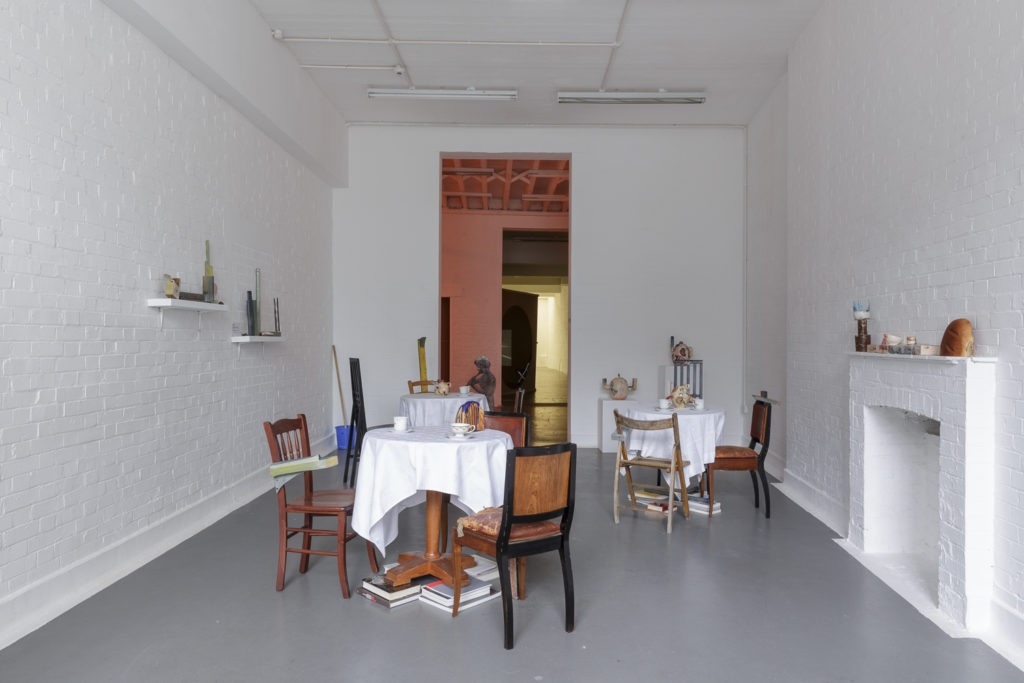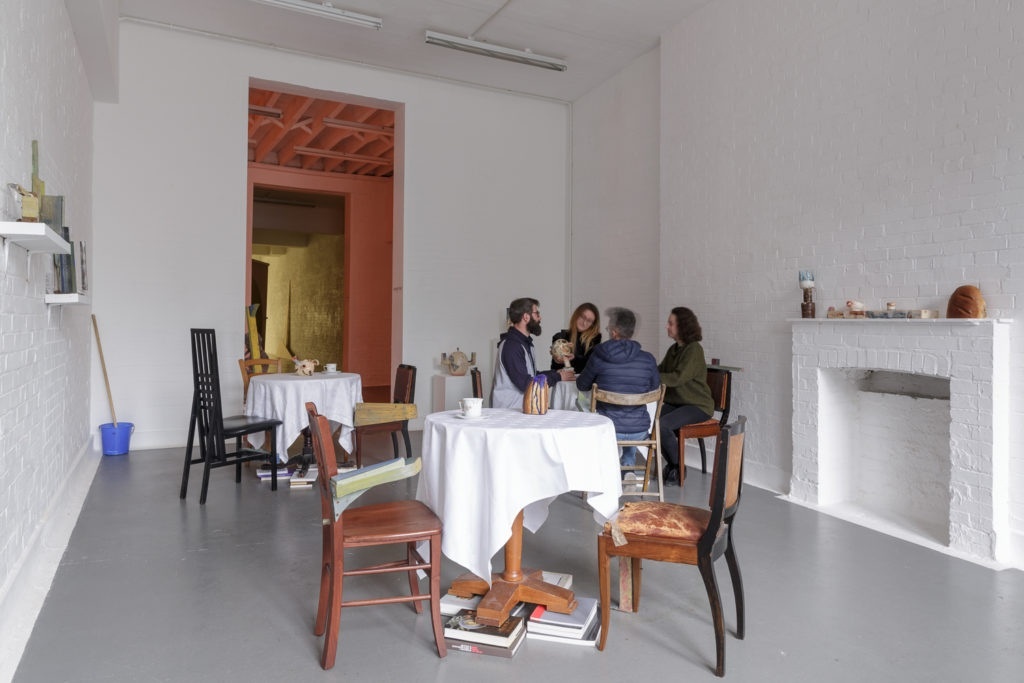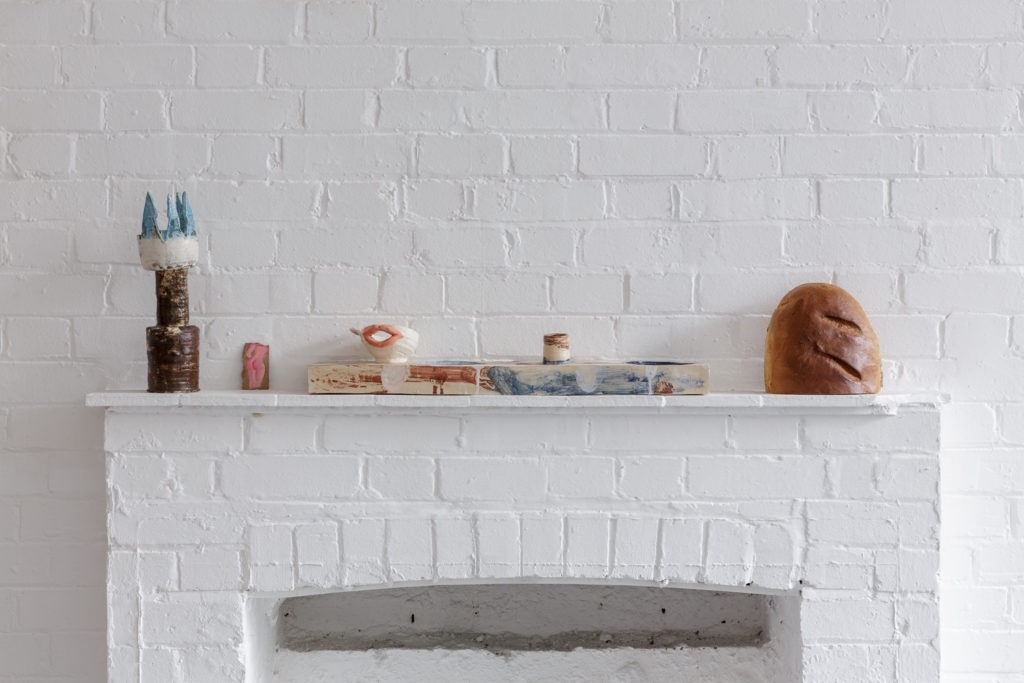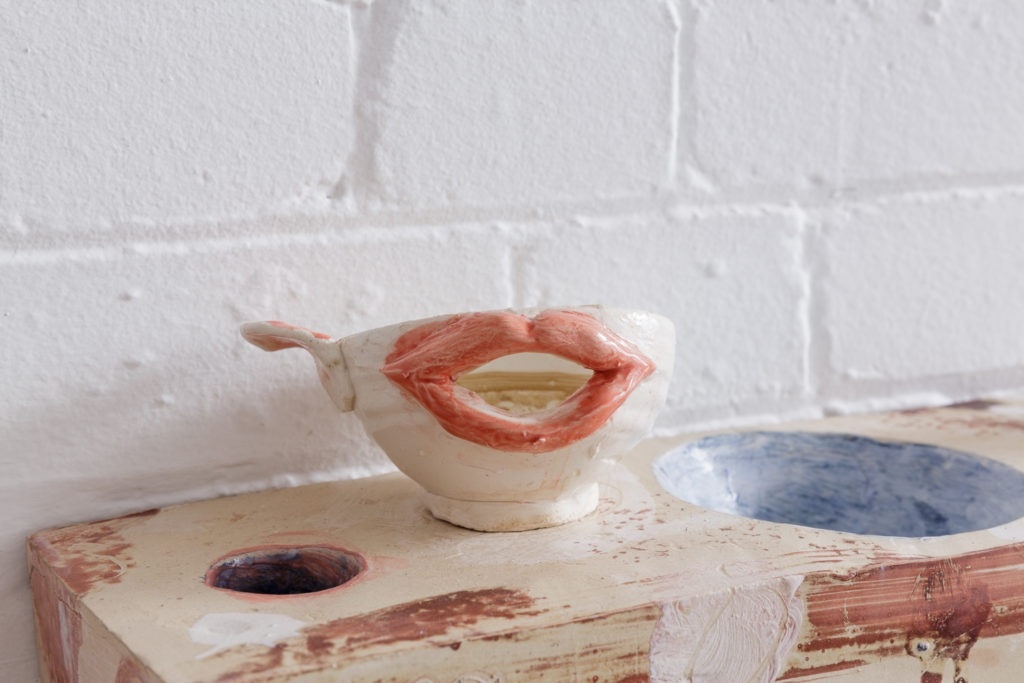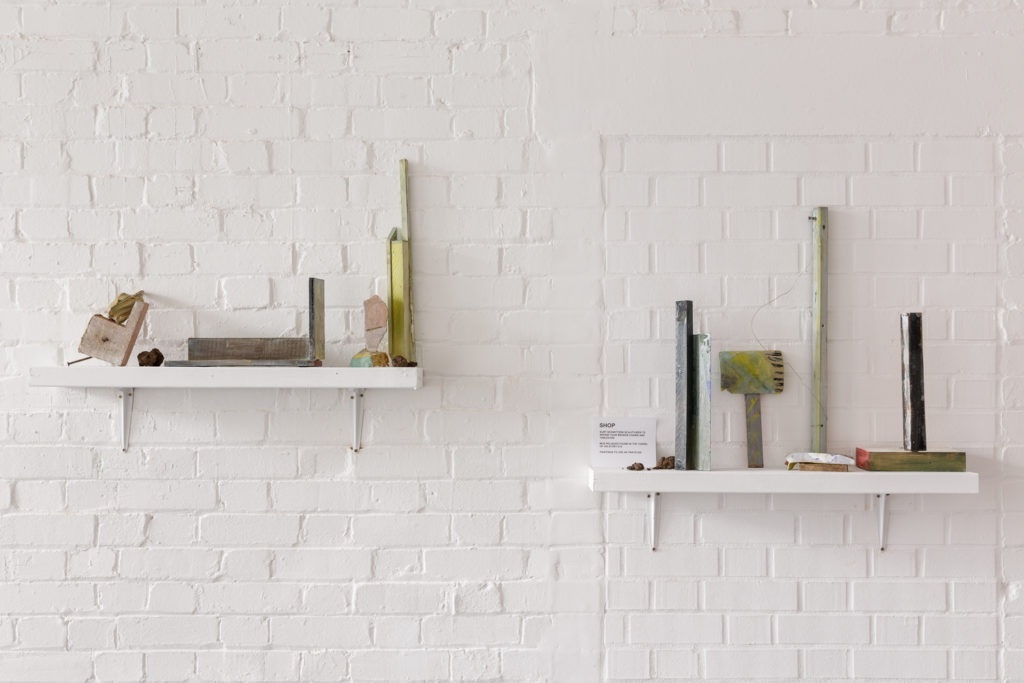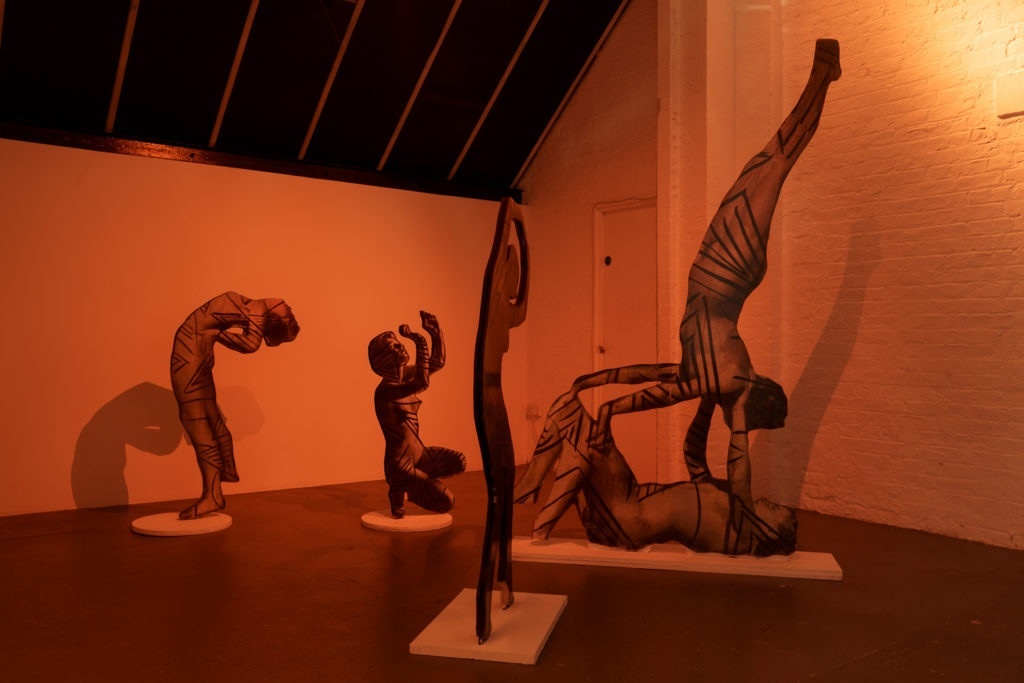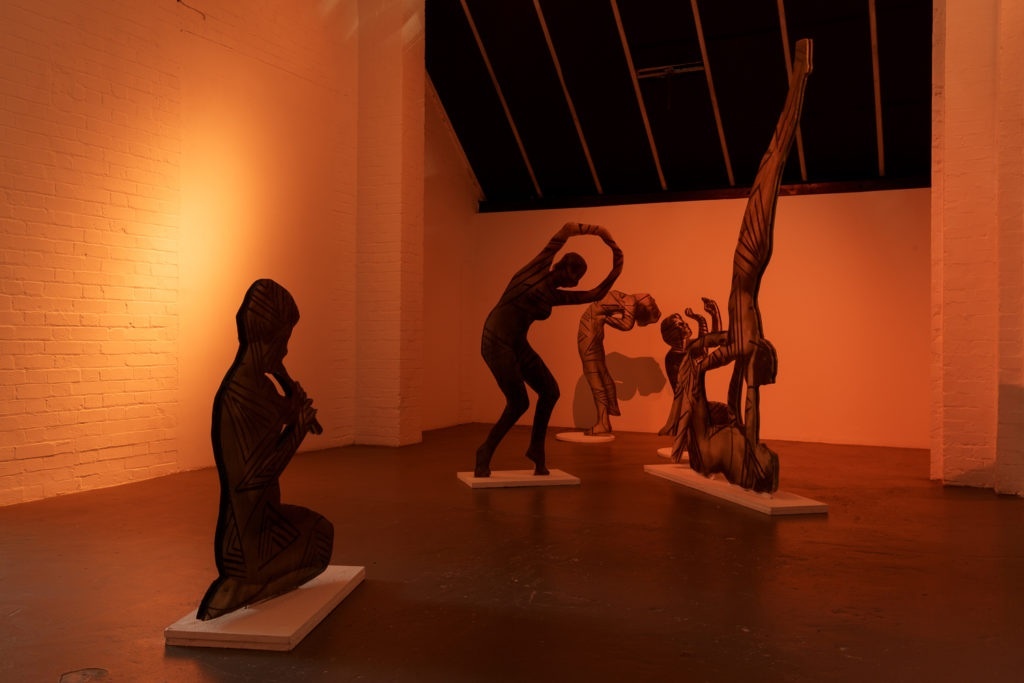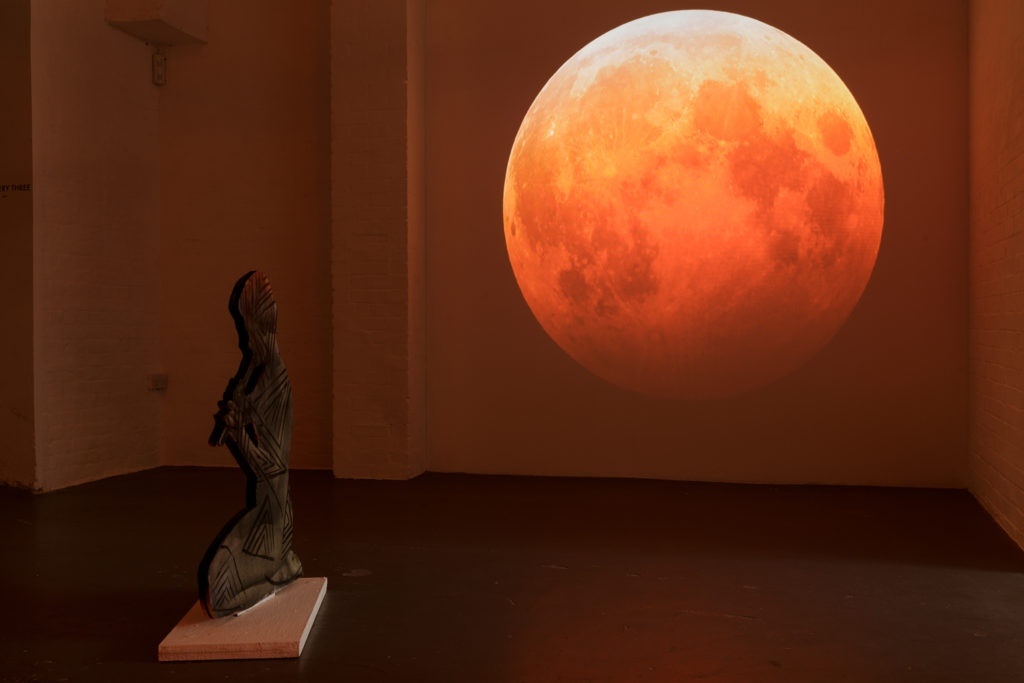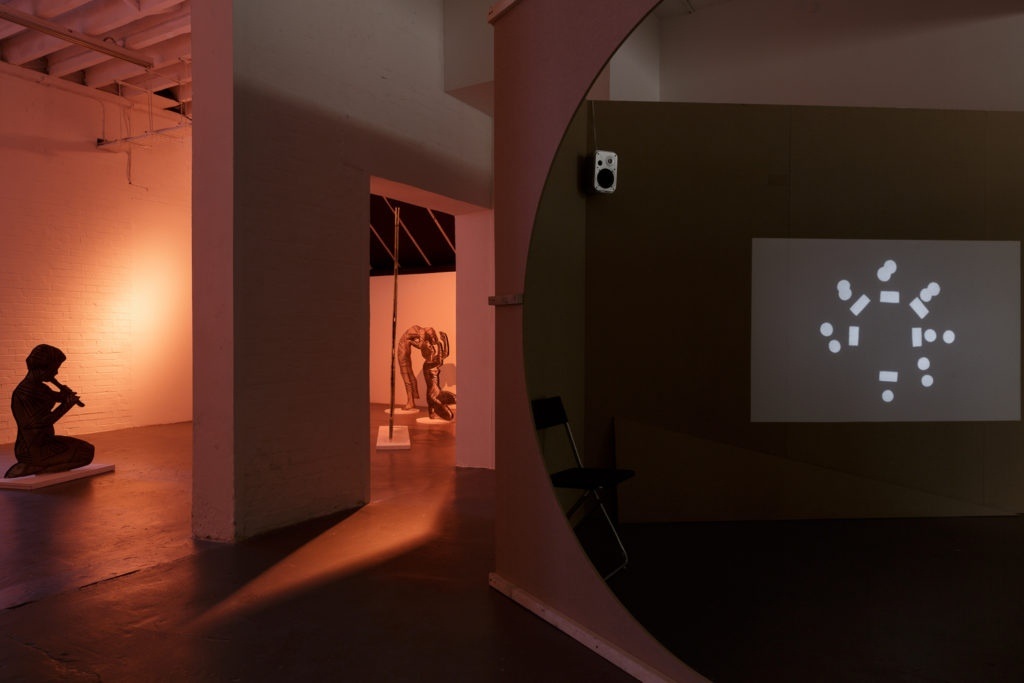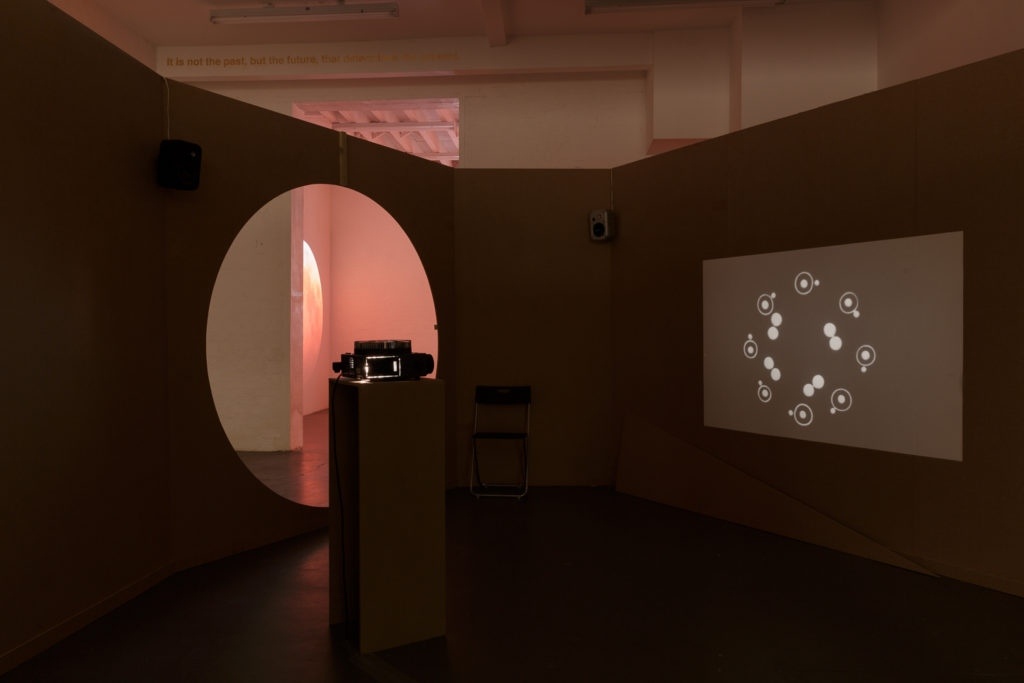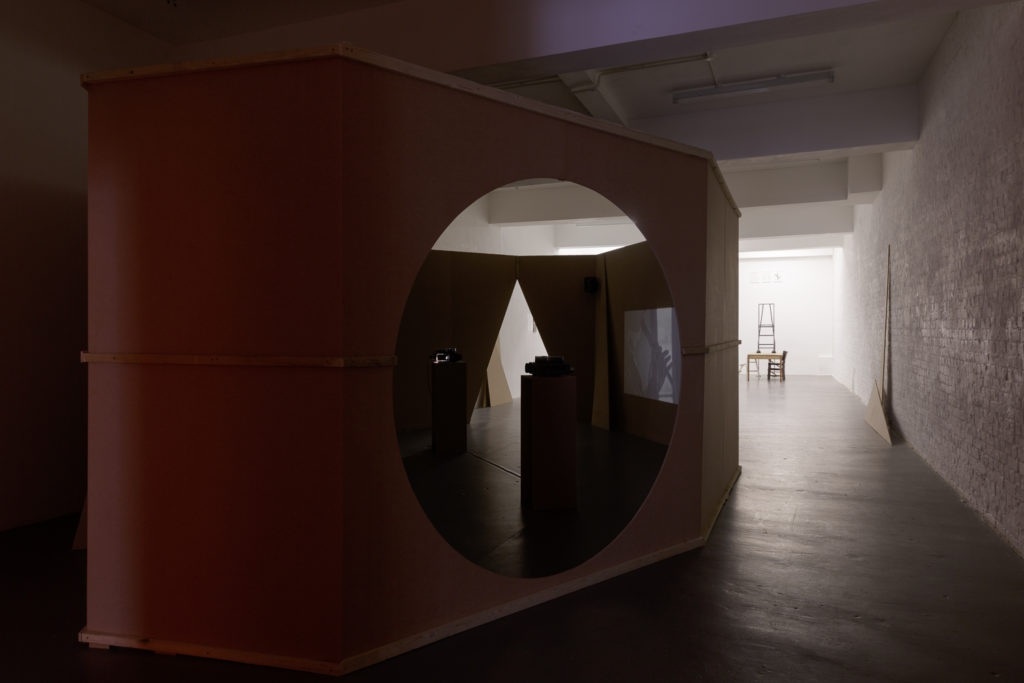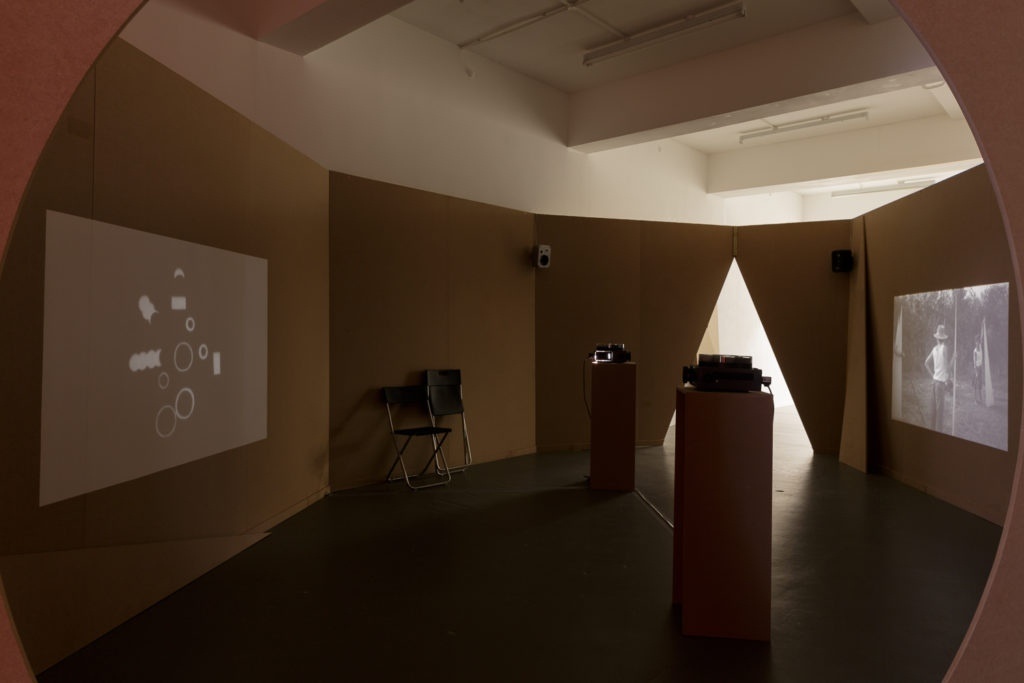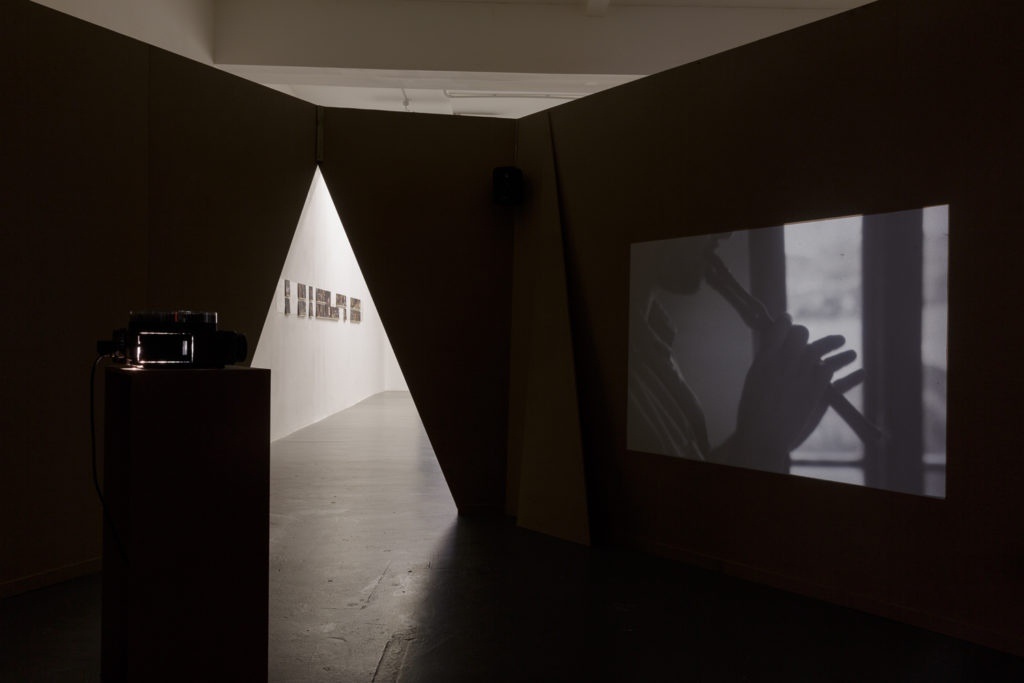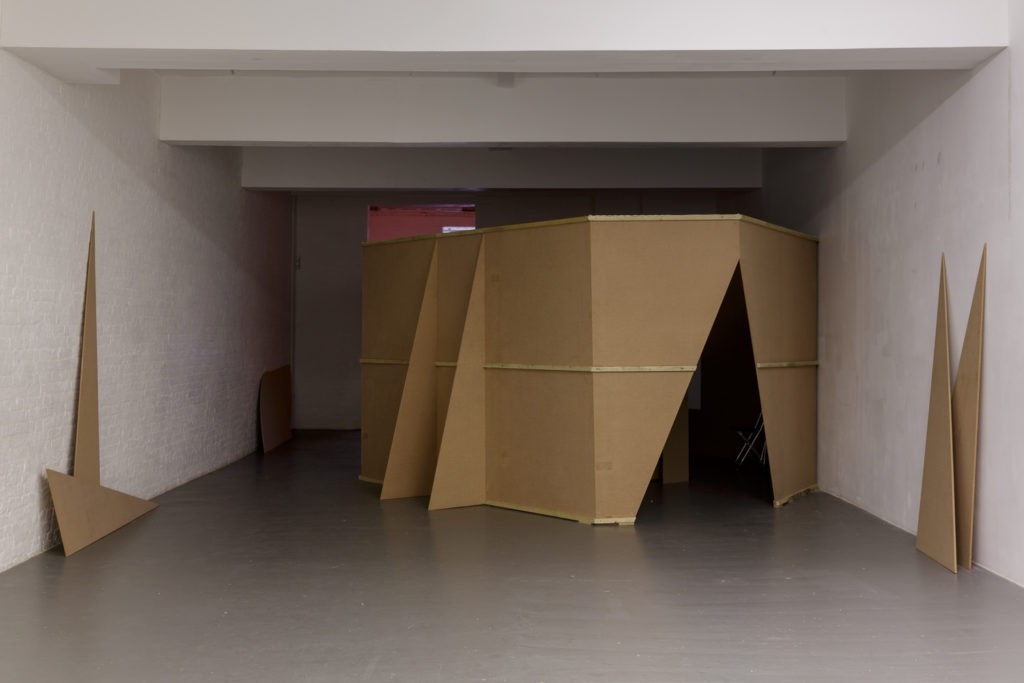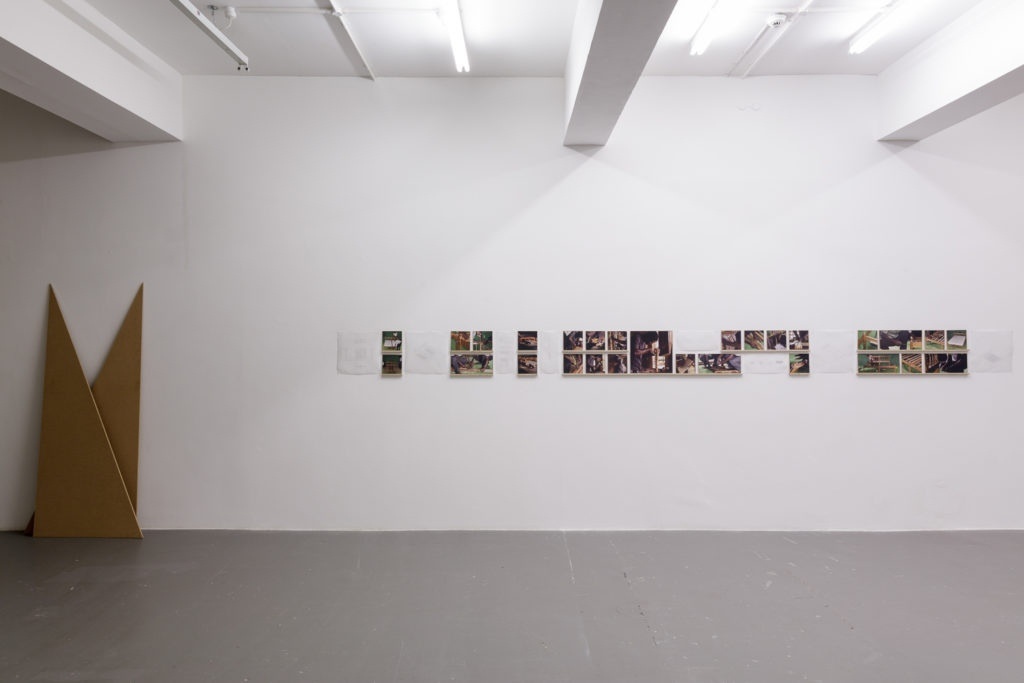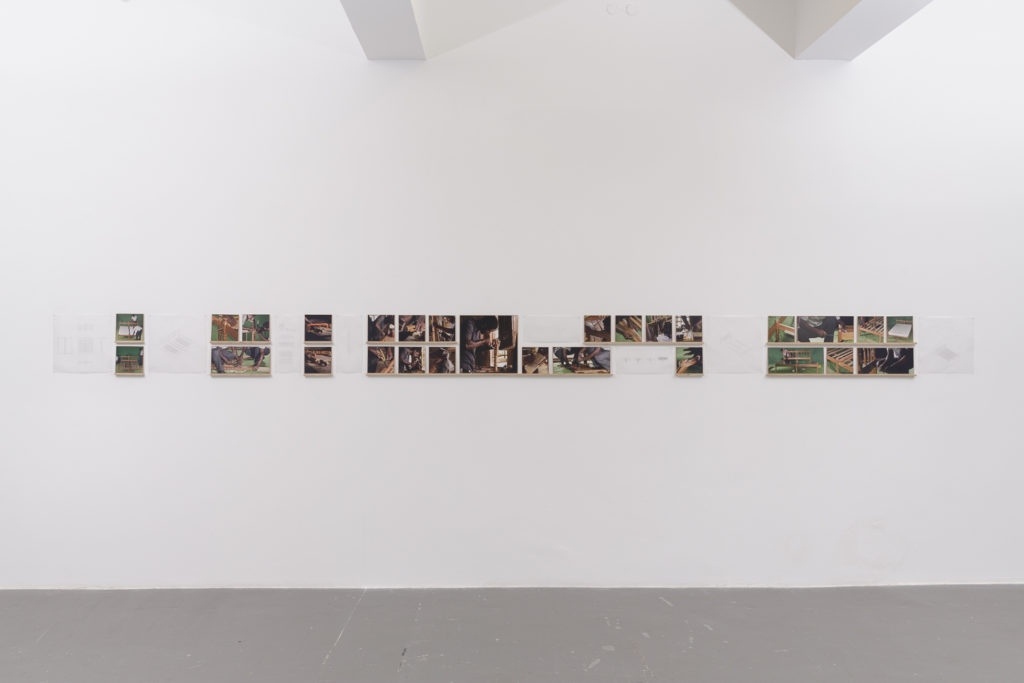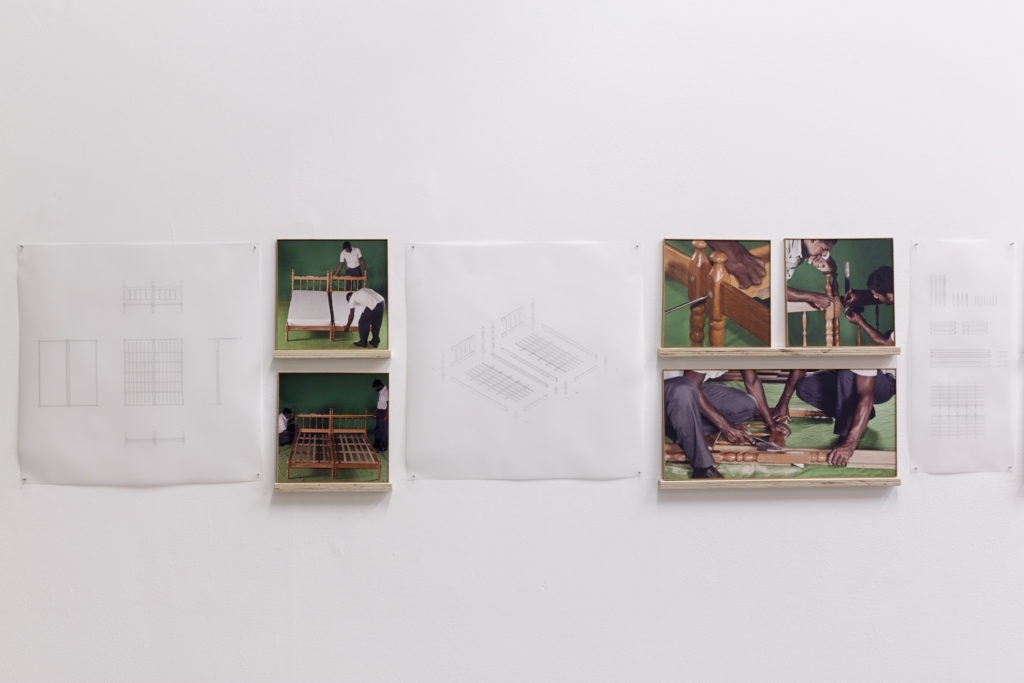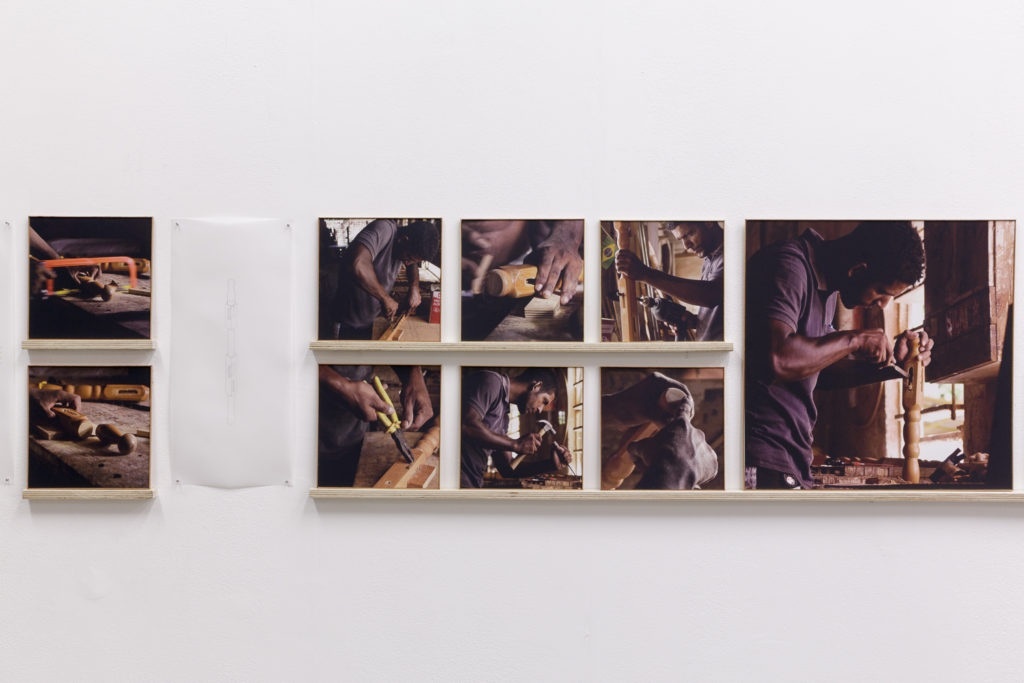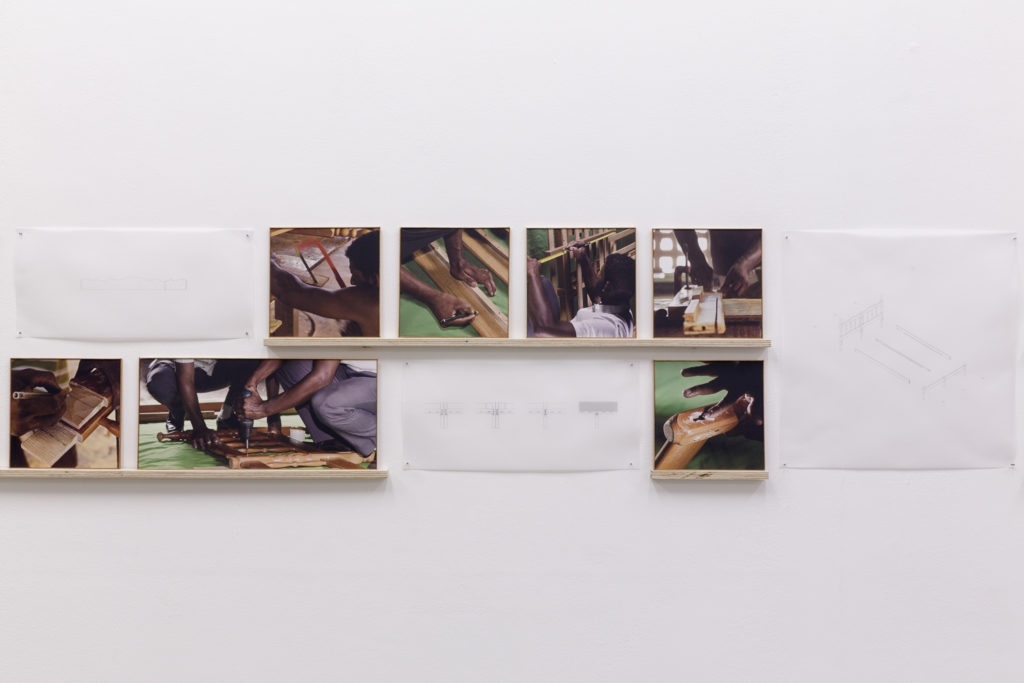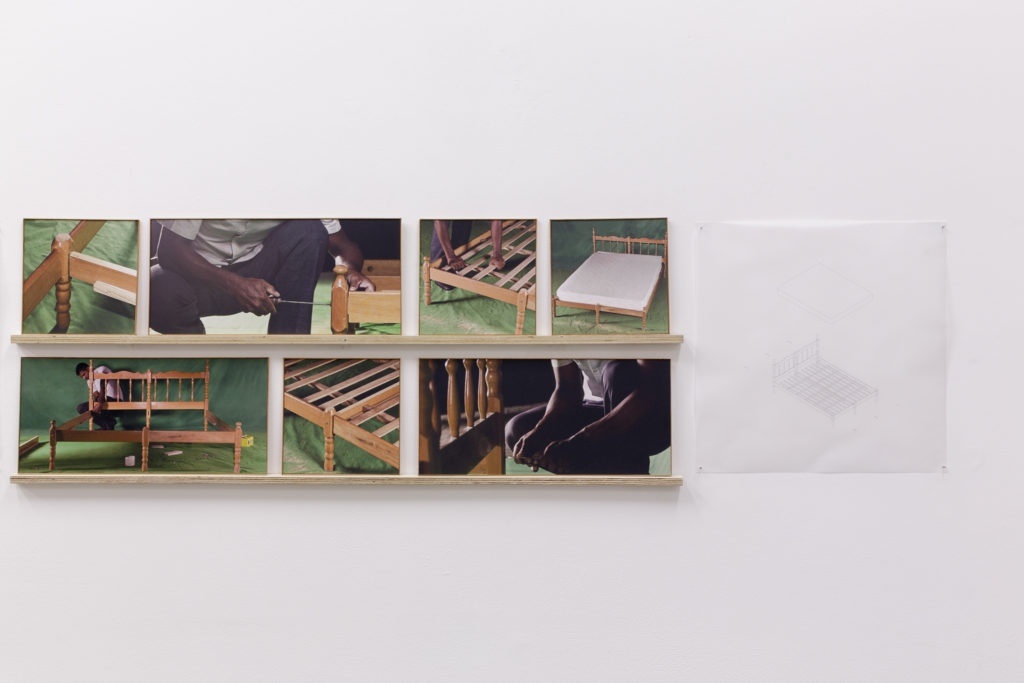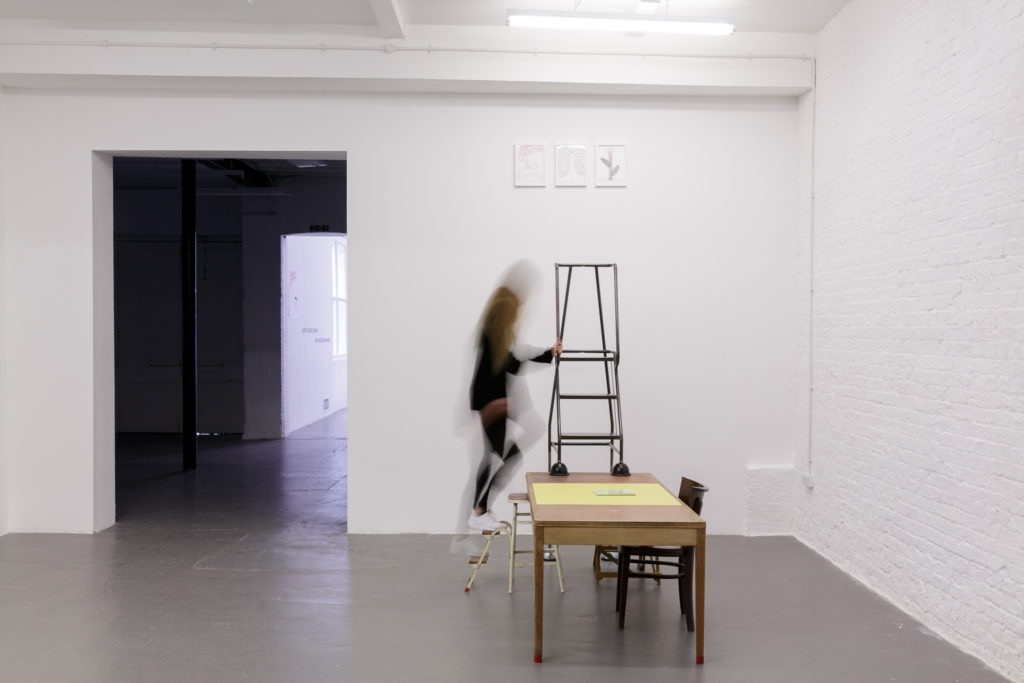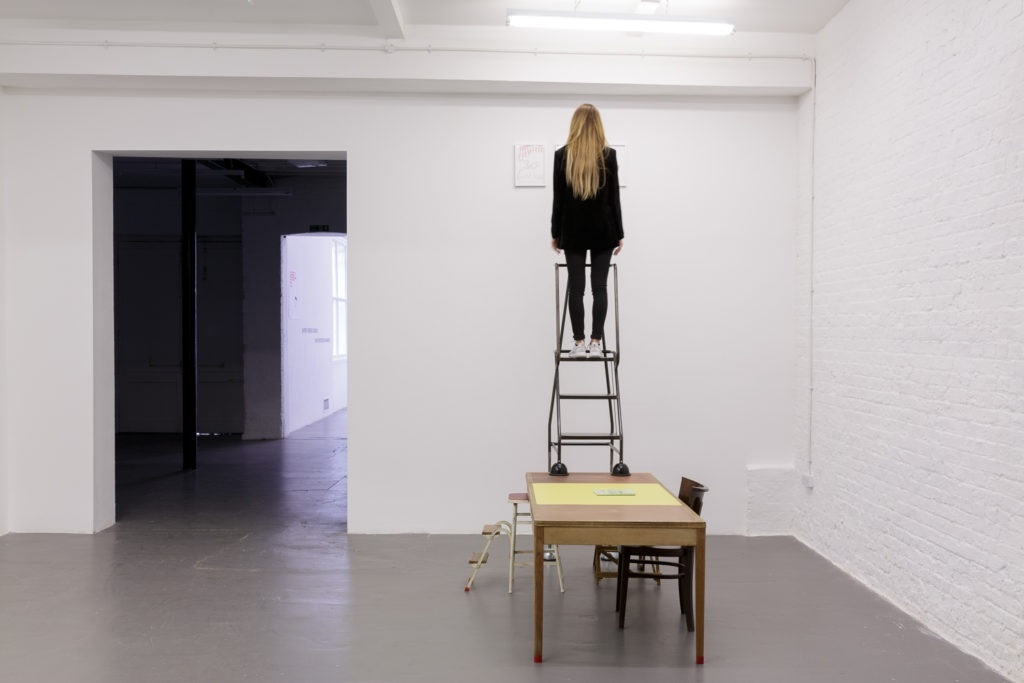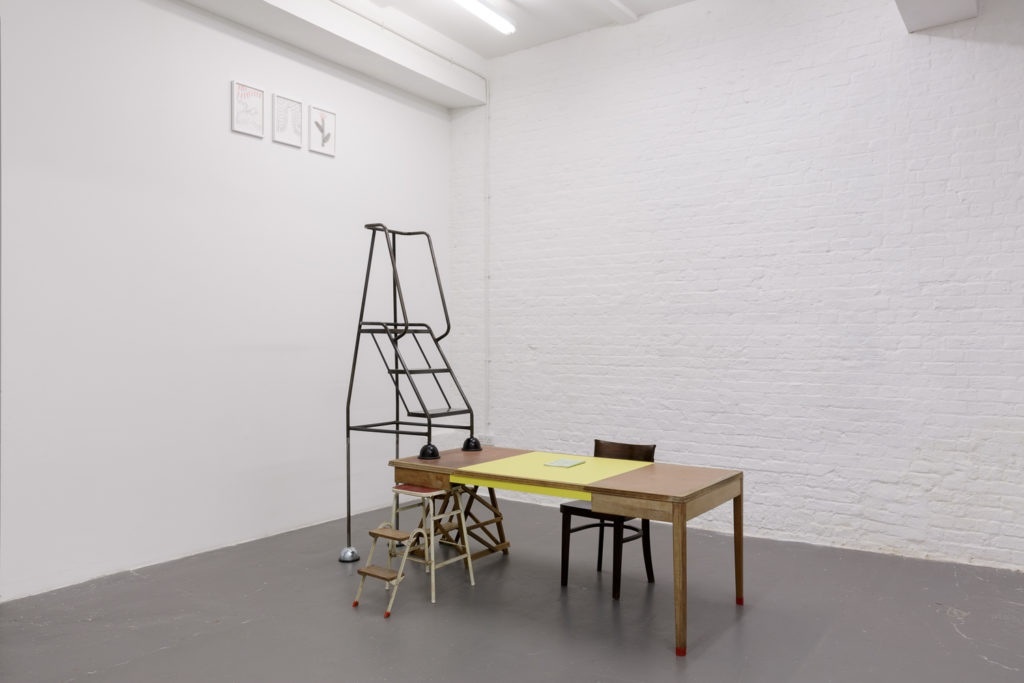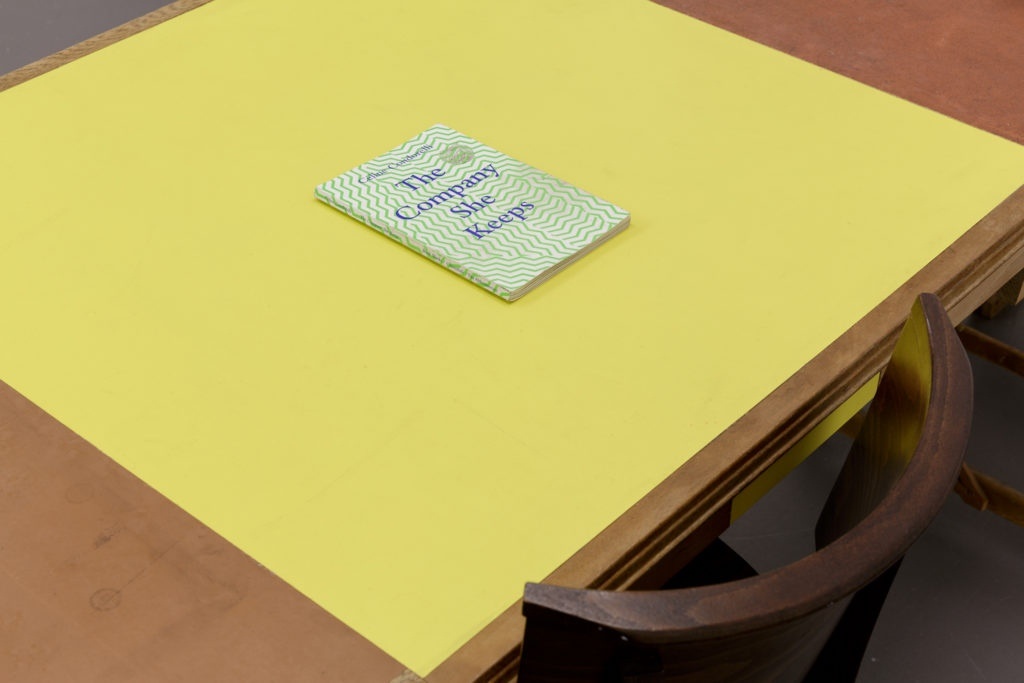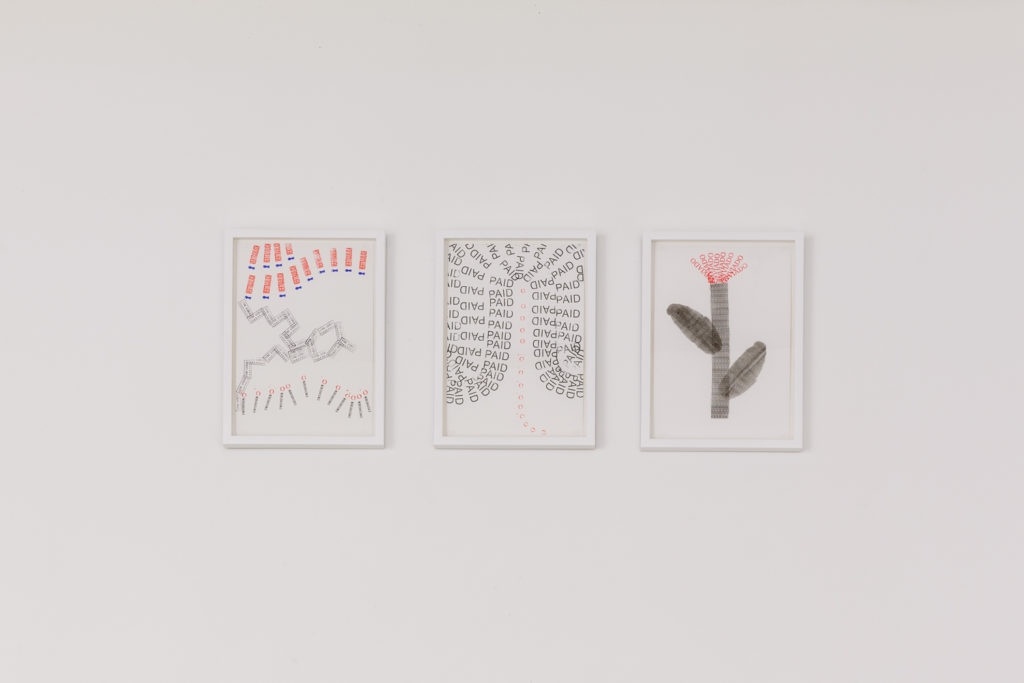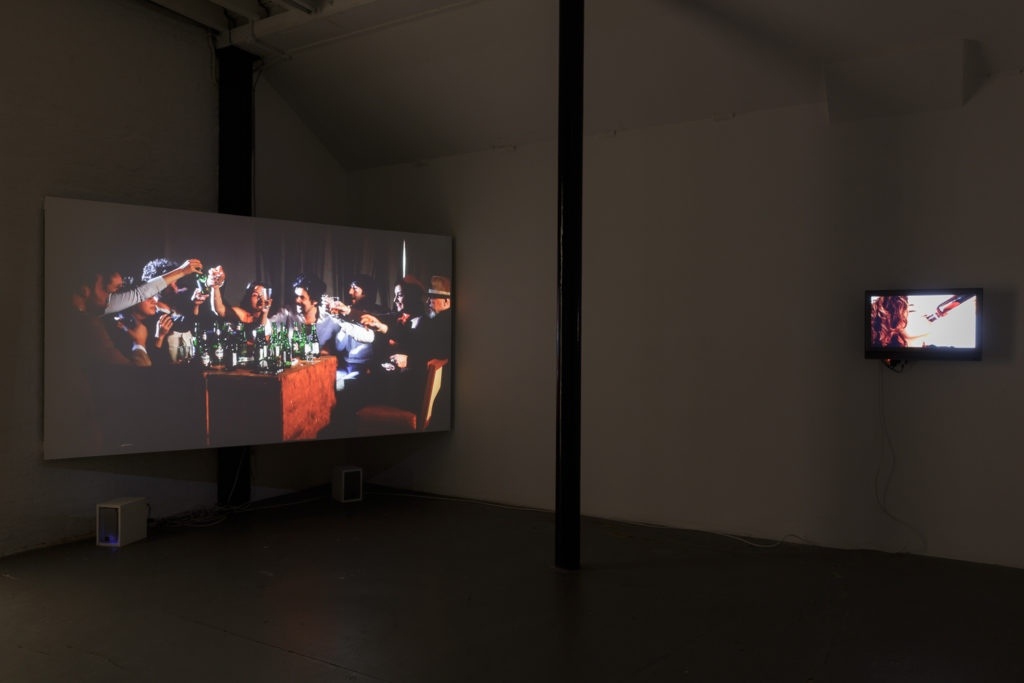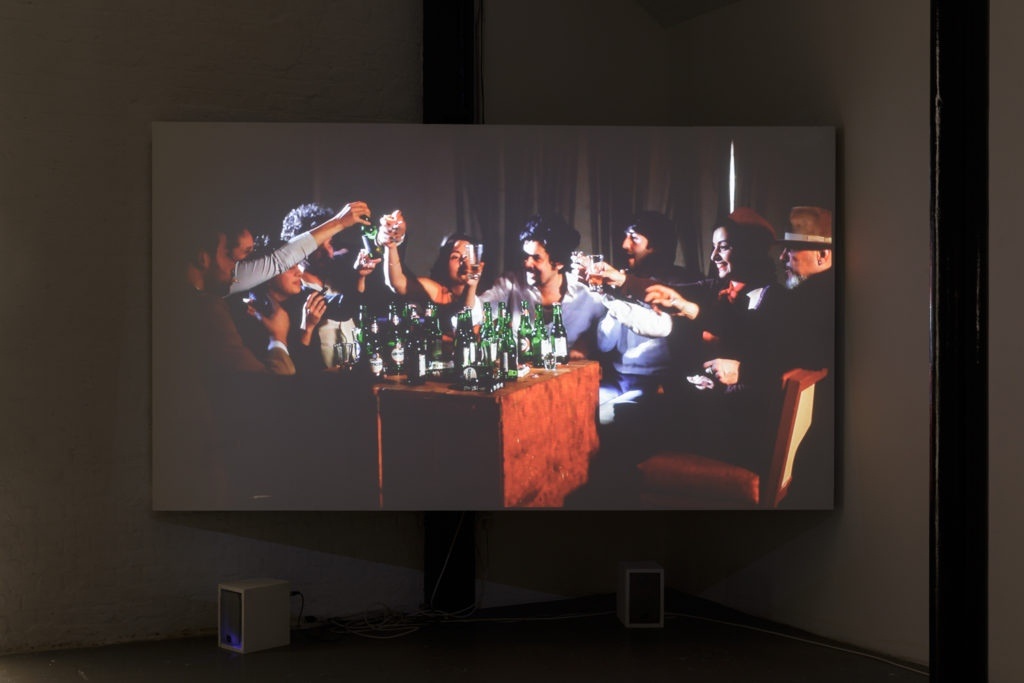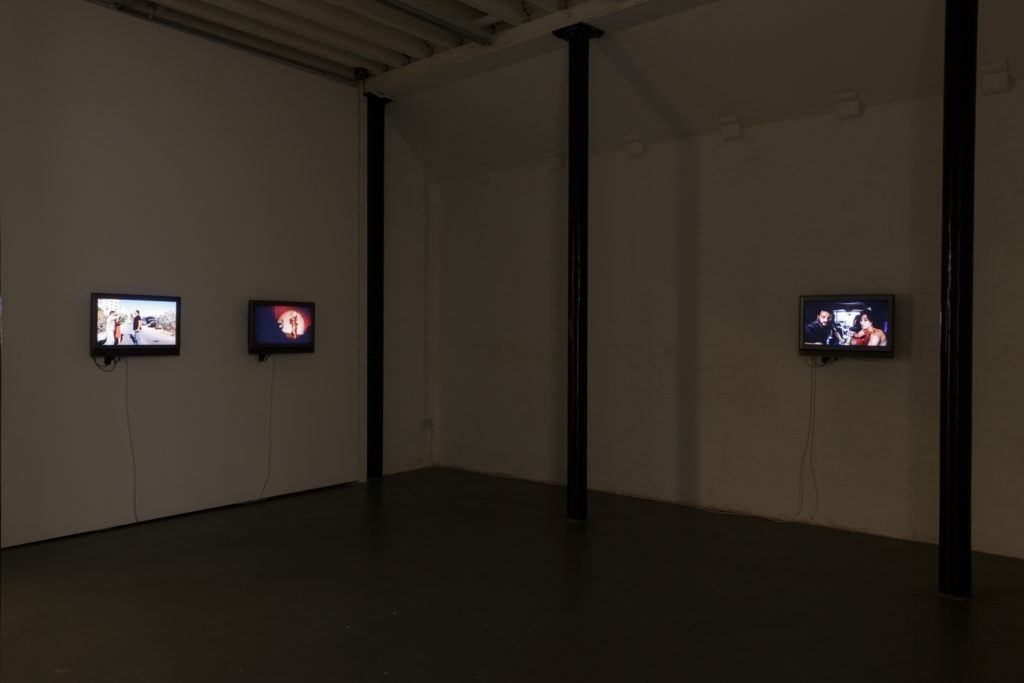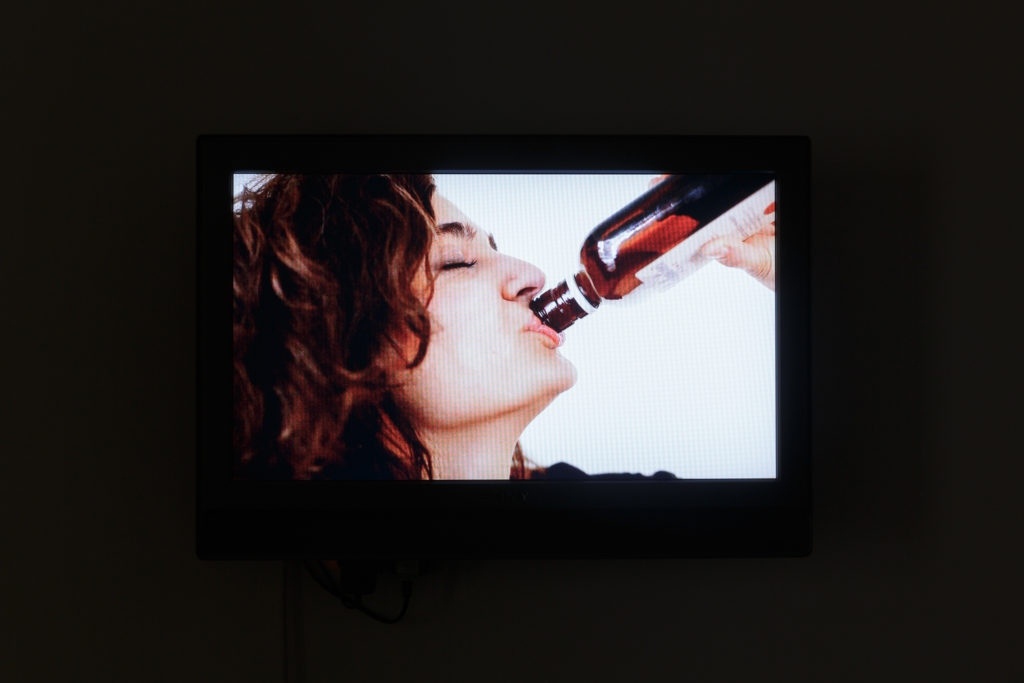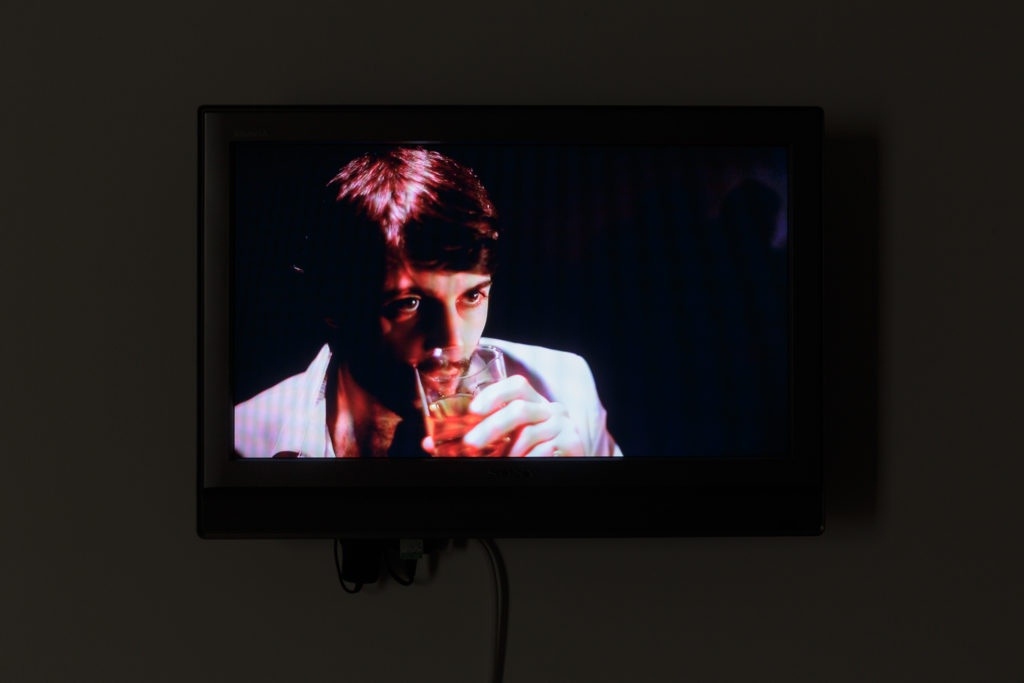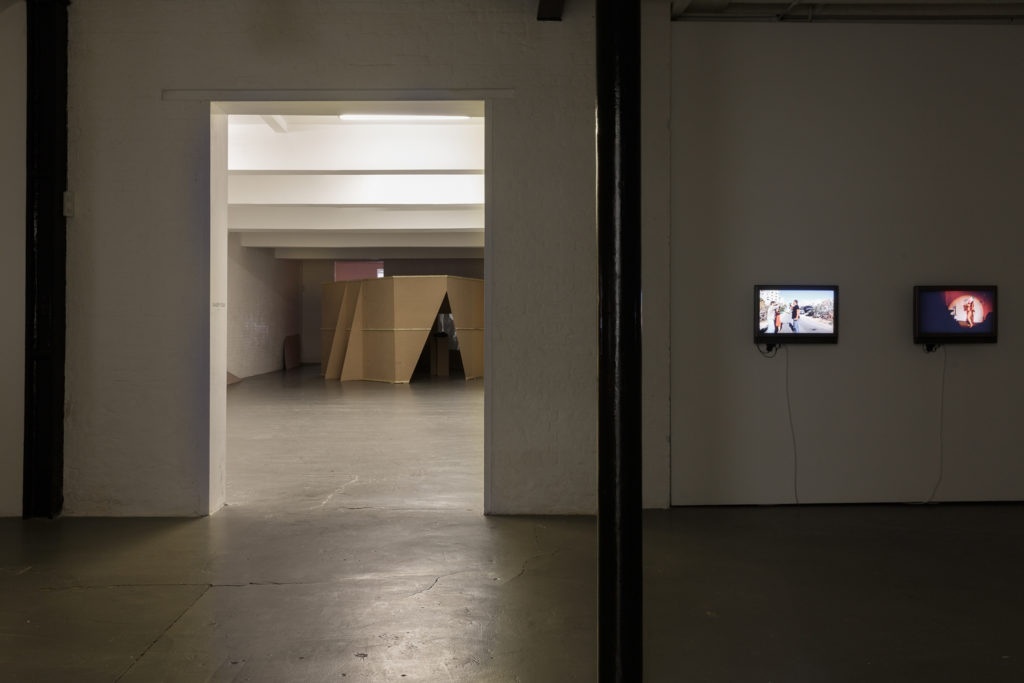André Guedes, Diogo Evangelista, Mounira Al Solh, Céline Condorelli, Amalia Pica, Jonathas De Andrade and Laure Prouvost: Greater than the Sum
DRAF London
Greater than the Sum is Kunsthalle Lissabon’s proposal to DRAF’s invitation for the tenth edition of the Curators’ Series. This exhibition explores further notions that have been at the core of Kunsthalle Lissabon’s ongoing reflection since 2009: what other ways can we imagine of ‘instituting’, both as a community and as individuals? [1]
Our globally intertwined planet has become a very contested place. Growing deregulation in all fields of human activity is translating into social and political unrest, labour precarity and exploitation, new forms of extremism reminiscent of last century’s fascist regimes, regression in civil rights and an impending environmental catastrophe. Notions of truth and fact are being contested daily and scientific knowledge is dismissed as opinion. Technology has provided unlimited access to information and to the world, but it has also completely flattened all hierarchies of relevance. The self has never been so connected yet so isolated. Such a tendency towards isolation is not only technological or affective, it is also and maybe foremost political. Withdrawal, exclusion and antagonism have been at the heart of current political discourse, to the point of threatening one of the most important political projects of the last century, the construction of a united Europe.
Under these specific conditions, establishing and maintaining interpersonal bonds and acting together with trust, affection, empathy and honesty can be a productive way of counteracting the global forces of political extremism. Mutual understanding, enjoyment of each other’s company and the ability to express one’s feelings and make mistakes without fear of judgment can shape a context for action.
Kunsthalle Lissabon works with ideas of sociability, solidarity and generosity as curatorial tools. These behaviours produce the relationships that compose the institution, considered friendships. From that perspective, curating isn’t so much understood as a form of authorship – making public the personal subjectivity and authority of the figure of the curator – but rather as enabling the public coming together of our constituent members – staff, artists, collaborators, visitors. The exhibitions Kunsthalle Lissabon presents in Lisbon, almost exclusively solos and new commissions, along with this exhibition in London, are the public materialisation of friendships produced by the institution (or outcome if we want to bypass notions of productivity).
Friendship is not a tool to be employed in a specific way with a specific group of people. Quite the opposite, it is a result of our activity, not its cause. It is a political horizon to which we aim, not a form of insular nepotism. For Kunsthalle Lissabon, friendship is a relevant outcome when thinking about curatorial ethics and politics. Furthermore, friendship can offer a political way of critically engaging with what surrounds us.
The title of the exhibition, Greater than the Sum, comes from the concept of synergy; defined as the interaction of the actions of two or more agents such that the result of the combined action is greater than expected as a simple additive combination of those agents acting separately. Synergy can be seen as the conceptual opposite of antagonism (which is so often considered essential to institutional success). The works in this exhibition suggest that collective action – whether simply spending time together, thinking together or acting together – is greater than the sum of individual actions. Moreover, the exhibition itself addresses these themes in a manner in which each individual work would be unable to achieve on its own.
Greater than the Sum attempts to make visible this line of research. Six projects present specific, yet very different, examples of the current relevance of ‘togetherness’. Simultaneously, they testify the specific relations Kunsthalle Lissabon has established over the years with an ever-expanding group of artists, which have shaped the institution itself. They explore notions of collective action through different prisms. Laure Prouvost’s installation, which opens the exhibition, operates through structures of hospitality and sociability. Diogo Evangelista’s piece addresses community, utopianism and leisure. Ideas of political agency and engagement manifest in André Guedes’s work. Practicality and functionality is central to both Jonathas de Andrade’s work and Amalia Pica and Céline Condorelli’s collaboration. Finally, antagonism and potential aggression surface in Mounira Al Solh’s video installation, the darker side of close personal relationships.
On entering the exhibition, Laure Prouvost’s installation GDM future franchise, 2017, has transformed Gallery One into a tearoom. Three tables are set with hand-made ceramics and customised chairs, where one can sit down and help oneself to some tea. The titular ‘GDM’ stands for ‘Grand Dad’s Museum’, Prouvost’s ongoing project that takes the form of a fictional museum to the artist’s grandfather. This new iteration includes components exhibited in her recent exhibition GDM – Grand Dad’s Visitor Center (19 Oct 2016 - 9 Apr 2017) at Hangar Bicocca, Milan. Either on arrival or just before leaving the exhibition, the invitation to sit down, drink some tea and chat with someone else allows for the enactment of ideas of sociability, hospitality and generosity.
In Gallery Two, the projection of an eclipsed moon takes centre stage. A set of cut-out female figures taken from early twentieth century Freikörperkultur (‘Free Body Culture’, a German naturist movement) magazines dance, play music and perform exercises in the orange-red glow of the celestial body. The installation No Future in that Place, 2012, by Diogo Evangelista presents an unknown communal ritual. It hints at an idea of freedom from society’s imposed constraints through different ways of being together. Originally produced for a solo exhibition at Parkour, Lisbon, the work manifests the artist’s interest in utopian counter-cultures and the political potential of community, leisure and joy. Evangelista previously researched states of altered consciousness, psychedelics and perception, and his works give visitors access to alternative sensory experiences.
Gallery Three opens with the installation Nova Árgea, by André Guedes. A geometric wooden structure houses two slide projections and a voiceover. The images and the text together describe and illustrate a fictional contemporary community during its daily activity, including a spatial game invented by the artist and acted by his friends. This narrative is inspired by A Comunal, an agricultural cooperative established in the Portuguese town Árgea during the PREC (Ongoing Revolutionary Process) period following the 1974 Revolution[2]. A Comunal was an agricultural project established on disused lands. Through the exchange of knowledge and fair contribution and participation of all its members, the co-operative’s revolutionary aim was fraternity among the social classes. The commune failed and was subsequently disbanded. Guedes’ ‘New Árgea’ was created in 2012 for the Rennes biennal, and was recently shown as a performance work at the Maria Matos Theatre in Lisbon.
On a more personal scale and ambiguous tone, Jonathas de Andrade’s work 2 em 1 (‘2 in 1’) both departs from and subverts, the logic of an instruction manual. Technical drawings and photographs explain how to turn two single beds into a double one, and document two young Brazilian carpenters following the process. The end result is clearly more complex than the sum of the original components. 2 em 1 functions as a metaphor for collective action, and even for intimacy, through the impersonal aesthetics of a manual of furniture design and customisation. The young men are quite literally constructing their own framework outside social norms. Like much of Andrade’s work, the images consciously contain the race and class filters of Brazilian society.
A collaboration between Céline Condorelli and Amalia Pica closes Gallery Three. It invites viewers to climb onto The Double And The Half (to Avery Gordon), 2014, a work by Condorelli, in order to closely examine Joy in Paperwork #148, Paperwork #156 and Paperwork 158, 2016, three works on paper by Pica. Pica’s series Joy in Paperwork (2015–ongoing) uses accountancy stamps in different European languages to create exuberant graphic compositions on paper, which resemble concrete poetry. Like much of Pica’s work, these works on paper playfully question structures allowing communication to happen (she has previously worked with semaphore, listening devices, infographics, radio antenna) and expand the expressive possibilities of a given form. Condorelli’s work also uses literal support structures to investigate emotional and social support structures. This comprises a desk supported by two stepladders and carrying a third. A chair taken from the host institution completes the configuration. Upon the desk, a copy of the publication The Company She Keeps (2013) includes an extended conversation about friendship between Céline Condorelli and American sociologist Avery Gordon, to whom the work is dedicated. The collaboration between Condorelli and Pica was a direct invitation to both artists, who are close friends, to respond to the curatorial assumptions explored by the exhibition.
The exhibition closes with Dinosaurs, 2012, a five-channel video installation by Mounira Al Solh in Gallery Four. The work draws from four different films from 1960s and 70s by American director John Cassavetes (Opening Night, Faces, Husbands and The Killing of A Chinese Bookie)[3]. Al Solh directs her friends to reenact specific scenes of those films, in which the act of drinking reveals moments of intimacy, antagonism and aggression, and loneliness.
Without any subtitles, the Arabic dialogue becomes a vehicle for non-verbal communication and interactions. Invoking Cassavetes as both subject of study and a lens, Al Solh explores how alcohol can intensify, exaggerate or expose human relations, even act as a catalyst for confrontation. The fragmented scenes build up a loose narrative that continues to unravel and unhinge with each drink. The emotional intensity of the exhibition peaks, as the work churns up the messy realities of tension, conflict and failure within friendships and collectives. Returning through the Galleries, one could recognise these themes buried in the other works in the show.
These are but a few of the many modalities of being together. We gather, we spend time together, we discuss, we plan to change the world, we might even antagonize each other. We know how to be together and we enjoy it. Both individually and as part of an exhibition, all of these works attempt to look at collective human actions, through the lenses of sociability, solidarity and generosity. The different ways friendship can be enacted, as well as its many outcomes, whether collaboration, leisure, political engagement and even antagonism resonate within the exhibition space.
Greater than the Sum thus aims to make visible images of togetherness while recuperating the political, ethical and aesthetic possibilities of friendship; and in that process inviting its audience to think of it as a way of critically engaging with the world.
Not I, we...
Luis Silva and João Mourão, Co-Directors of Kunsthalle Lissabon
[1]‘Instituting’ is the term chosen by Kunsthalle Lissabon to describe the attitudes and patterns of behavior of the organisation and its constituent members – staff, artists, visitors –, when producing and engaging with art works and each other.
[2]PREC (Processo Revolucionário Em Curso, or On-Going Revolutionary Process) was the period between the popular ‘Carnation Revolution’ of 25 Apr 1974, ending four decades of dictatorship in Portugal, and the approval of a democratic constitution in 1976.
[3]John Cassavetes (1929 –1989) was a Greek-American actor, film director, and screenwriter, and a pioneer of American independent film, writing and directing over a dozen movies, which he partially self-financed, and pioneered the use of improvisation and a realistic cinéma vérité style.
The Curators’ Series is supported by Arts Council England. Greater than the Sum is supported by Gulbenkian Foundation and the Camões Institute

